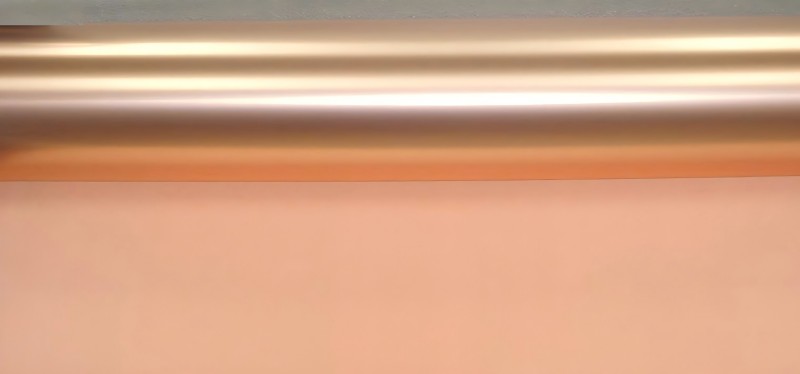1.Development History of Copper Foil
The history of copper foil can be traced back to the 1930s, when American inventor Thomas Edison invented a patent for continuous manufacturing of thin metal foil, which became the pioneer of modern electrolytic copper foil technology. Subsequently, Japan introduced and developed this technology in the 1960s, and China achieved large-scale continuous production of copper foil in the early 1970s.
2.Classification of copper foil
Copper foil is mainly divided into two categories: rolled copper foil (RA) and electrolytic copper foil (ED).
Rolled copper foil: made by physical means, with smooth surface, excellent conductivity and high cost.
Electrolytic copper foil: made by electrolytic deposition, with low cost, and is the mainstream product on the market.
Among them, electrolytic copper foil can be further subdivided into multiple types to meet different application needs:
●HTE copper foil: high temperature resistance, high ductility, suitable for multi-layer PCB boards, such as high-performance servers and avionics equipment.
Case: Inspur Information's high-performance servers use HTE copper foil to address thermal management and signal integrity issues in high-performance computing.
●RTF copper foil: Improves the adhesion between copper foil and insulating substrate, commonly used in automotive electronic control units.
Case: CATL's battery management system uses RTF copper foil to ensure reliability and stability under extreme conditions.
●ULP copper foil: ultra-low profile, reducing the thickness of PCB boards, suitable for thin electronic products such as smartphones.
Case: Xiaomi's smartphone motherboard uses ULP copper foil to achieve a lighter and thinner design.
●HVLP copper foil: high-frequency ultra-low profile copper foil, is particularly valued by the market for its excellent signal transmission performance. It has the advantages of high hardness, smooth roughened surface, good thermal stability, uniform thickness, etc., which can minimize signal loss in electronic products. It is used for high-speed transmission PCB boards such as high-end servers and data centers.
Case: Recently, Solus Advanced Materials, one of Nvidia's core CCL suppliers in South Korea, has obtained Nvidia's final mass production license and will supply HVLP copper foil to Doosan Electronics for use in Nvidia's new generation of AI accelerators that Nvidia plans to launch this year.
3.Application industries and cases
●Printed Circuit Board (PCB)
Copper foil, as the conductive layer of PCB, is an indispensable component of electronic devices.
Case: The PCB board used in Huawei's server contains high-precision copper foil to achieve complex circuit design and high-speed data processing.
●Lithium-ion battery
As the negative electrode current collector, copper foil plays a key conductive role in the battery.
Case: CATL's lithium-ion battery uses highly conductive electrolytic copper foil, which improves the battery's energy density and charge and discharge efficiency.
●Electromagnetic Shielding
In medical equipment MRI machines and communication base stations, copper foil is used to shield electromagnetic interference.
Case: United Imaging Medical's MRI equipment uses copper foil material for electromagnetic shielding, ensuring the clarity and accuracy of imaging.
●Flexible Printed Circuit Board
Rolled copper foil is suitable for bendable electronic devices due to its flexibility.
Case: Xiaomi wristband uses flexible PCB, where copper foil provides the necessary conductive path while maintaining the flexibility of the device.
●Consumer electronics, computers and related equipment
Copper foil plays a core role in the motherboards of devices such as smartphones and laptops.
Case: Huawei's MateBook series of laptops use highly conductive copper foil to ensure the performance and reliability of the device.
●Automotive electronics In modern cars
copper foil is used in key electronic components such as engine control units and battery management systems.
Case: Weilai's electric vehicles use copper foil to improve battery charging efficiency and safety.
●In communication equipment such as 5G base stations and routers
copper foil is used to achieve high-speed data transmission.
Case: Huawei's 5G base station equipment uses high-performance copper foil to support high-speed data transmission and processing.

Post time: Sep-05-2024




